Most Facebook marketers quickly realize that things aren’t as easy as some of these web articles make them seem. There is a lot of nuance to every different type of engagement method. So when you read about leveraging something in your favor, you need more than the gist – you need to get to the meat of the matter. Below, you will read about a few different ways to find leverage on Facebook, along with practical applications you can implement immediately into your campaign.
Different Ways to Find Leverage on Facebook
Facebook Ads
There are many different paid categories of ads on Facebook for a reason: They work! Of course, using Facebook ads can be difficult for beginners and even for individuals who don’t quite understand how to target their intended market. While it is true that paying more money can help increase your reach, it’s also true that ads won’t work all on their own – as in, they don’t simply fall into the pockets of your audience without some guidance. So it becomes a game of leverage here. How can you use Facebook’s ad options to leverage your campaign? Out of the multiple types of ad formats Facebook offers, let’s speak quickly about Page Post ads. These ads come in six different varieties: Photos, videos, questions, status updates, events, and links. A picture ad, for example, can take up much more real estate on a person’s News Feed than other ads, and they appear on both the mobile and desktop version of Facebook. They also earn a 14% higher ROI than normal domain ads, according to a Nanigans study based on 975 million impressions, and you can target this ad to its intended audience through a variety of Facebook tools. There are three things to keep in mind when using Page Post ads:
- Always be engaging: Engagement is paramount here. You want to ensure that you’re releasing eye-popping, interesting photos (charts, memes, infographics, specific product images, etc) that really capture a user’s attentions.
- Always use concise messaging: Think of text on your Page Post ad like text on a mobile ad. You want to get to the point as quickly as possible. Say what you need to within the first 90 characters of the ad. Use hot-button words that are niche-appropriate; list dollar amounts, guarantees, or other compelling messages to draw attention without being vague. Get right to the point.
- Always test multiple ads: Using a third-party application will allow you to test multiple ad formats. Even though you’re going to change ads consistently, you still need to test how ads perform before you launch them on a wider basis. Run multiple versions of an ad with variations (demographics like age range, location, different keywords, etc) to see which works best for you.
Embedded Posts Embedded Posts is a relatively new feature launched by Facebook which will allow page posts to actually be embedded on other websites. These third-party embedding features are very similar to other sites like Twitter and Instagram. CNN was one of the first to jump on this, conducting a poll about Bradley Manning on Facebook and posting the results on their main website. This type of embedding feature has huge implications for marketers in terms of leveraging the feature. How can this work out in your favor as a marketer? Well, a good example of this is taking a Facebook review you’ve received and embedding it on your website. If you have an informative post that’s very popular and engaging, or a Facebook post that has perhaps earned a lot of likes and shares that has more of a social context, you can spread out well beyond putting a Facebook button on your site and meld two sites together. This drives traffic back to Facebook and also allows Facebook participating from another site. Embedded posts obviously aren’t all the rage yet. But this is a free feature that you can easily use to your benefit. Facebook Hashtags Using Facebook for business is usually a low-cost and even fun way of conducting your business affairs. With Facebook hashtags, marketers on this site can now use the system made famous by Twitter and used by other social sites like Google+ to help categorize keywords and ultimately boost their presence. These hashtags (#) are basically like a DD system at the library, for lack of a better analogy. By having the # symbol in front of a word, it then gets categorized and becomes available in a search. So what was a simple “Hey, what’s up” post can now contain a hashtag keyword/phrase and become searchable. When you’re planning on using hashtags for your Facebook content, be careful here not to get into Kobe Bryant territory, where every other word has a hashtag in front of it. Hashtags can be valuable weapons for you to use for your organic reach, or potentially even to add keywords and phrases to paid advertising. So make sure that you’re putting the hashtag on popular terms and words that are related to your market. You still have to exercise a marketer’s a approach here; it’s not all about using the most popular or unique hashtags to draw attention to yourself in an unrelated market. That’s just a wasted effort. EdgeRank To put it in simple terms, EdgeRank is Facebook’s algorithm that it uses for rating and sorting and displaying material. This is a very cutting-edge algorithm compared to others used by similar social sites. According to the main EdgeRank site, the algorithm can be understood as “the sum of edges,” and is made up of three separate aspects of content: Affinity, Weight, and Time Decay. To leverage EdgeRank while using Facebook, one has to play to the way the algorithm sorts material in order to increase visibility. For instance, Facebook has stated that 88% of all its engagement on-site happens via the News Feed. Leveraging EdgeRank can put you in more people’s News Feeds and ultimately boost your engagement. Sound simple enough? Well, it’s not as simple as using better keywords or posting better-quality, more interesting content that your audience will appreciate. Yes, you should definitely do that! But the fact of the matter is that your content may need to change dramatically. The idea here is to increase the number of likes and shares your material is receiving to boost its affinity and weight, which should stave off immediate decay. To increase the affinity and weight of any particular piece of content, you have to really amp up the content. You have to do certain things, such as:
- Amazing people with content they love
- Solving a specific problem
- Offering tips and other useful information
- Providing humor for people
- Providing inspiration for people
- Posting high-quality, unique content that’s not simple recycled
Graph Search As someone in the tech “know” and they may tell you that Graph Search not only has the potential to revolutionize Facebook, but also the entire ‘net in general. Now, whether this eventually becomes reality is beside the point. The important thing to focus on is leveraging Facebook’s Graph Search in order to boost your marketing – your engagement and ultimately your bottom line. Graph Search is different from typical SEO in that the former uses objects rather than keywords. Facebook’s unique searching method focuses on entities and relationships and how things fit together in a wider context, rather than just keyword X pointing to content Y. One of the best ways to leverage this searching potential is to provide objects – in this case, a node. Graph Search returns nodes, and if you have an on-location business, for example, its location should have a place node. Each one should. Nodes also pick up popularity through engagement on Facebook, so this is yet another instance where focusing on engagement can help you out tremendously in your marketing. Nodes that are connected directly and indirectly with users are more relevant, so this plays into your audience and also friends of your audience. Try optimizing your brand’s presence via the entire Internet via other sites, as well as offering incentives to customers in exchange for some type of engagement. What could work well here are contests and promotions, interesting status updates and other posts, discounts, solving a problem, etc. There are many ways to increase the effectiveness of your marketing campaign when advertising with Facebook. Use the examples listed above in order to boost your engagement and to bolster your campaign.

